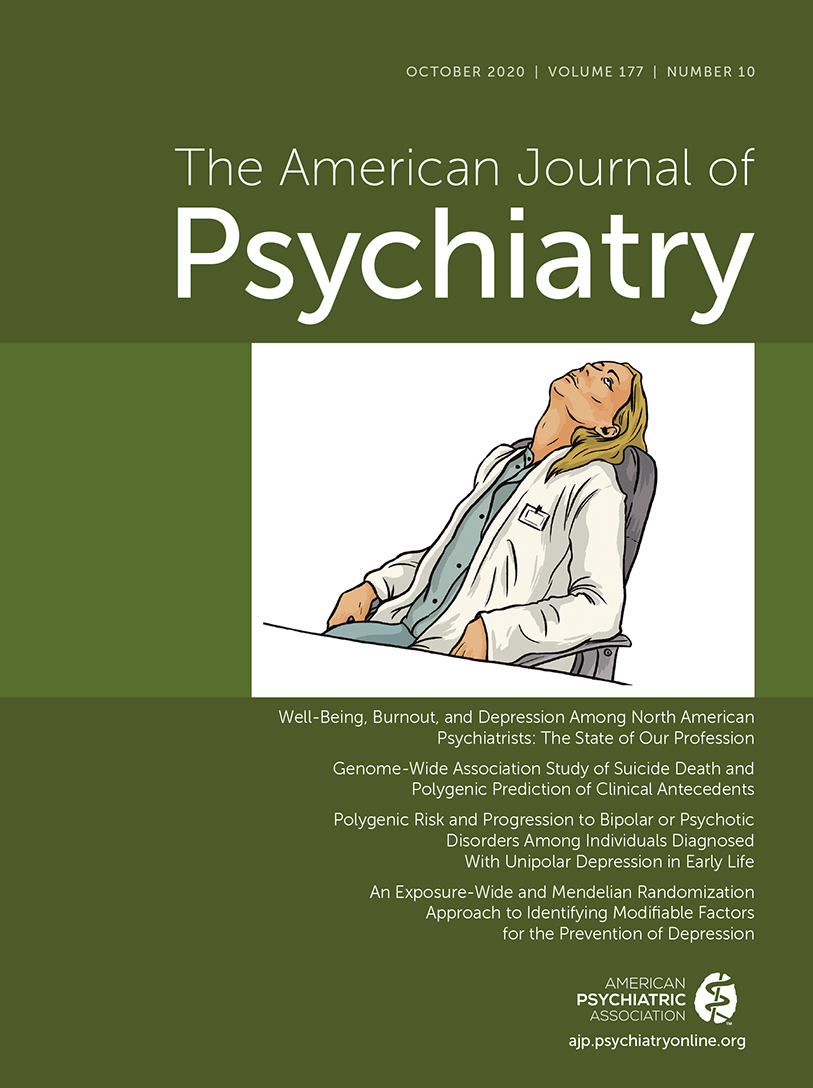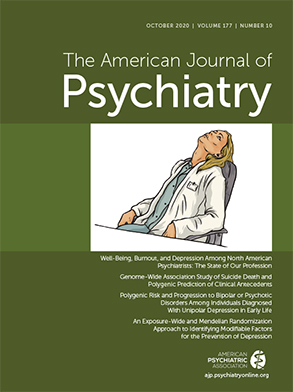Polygenic Risk and Progression to Bipolar or Psychotic Disorders Among Individuals Diagnosed With Unipolar Depression in Early Life
Abstract
Objective:
Methods:
Results:
Conclusions:
Methods
Data Sources
Genotyping
Study Sample
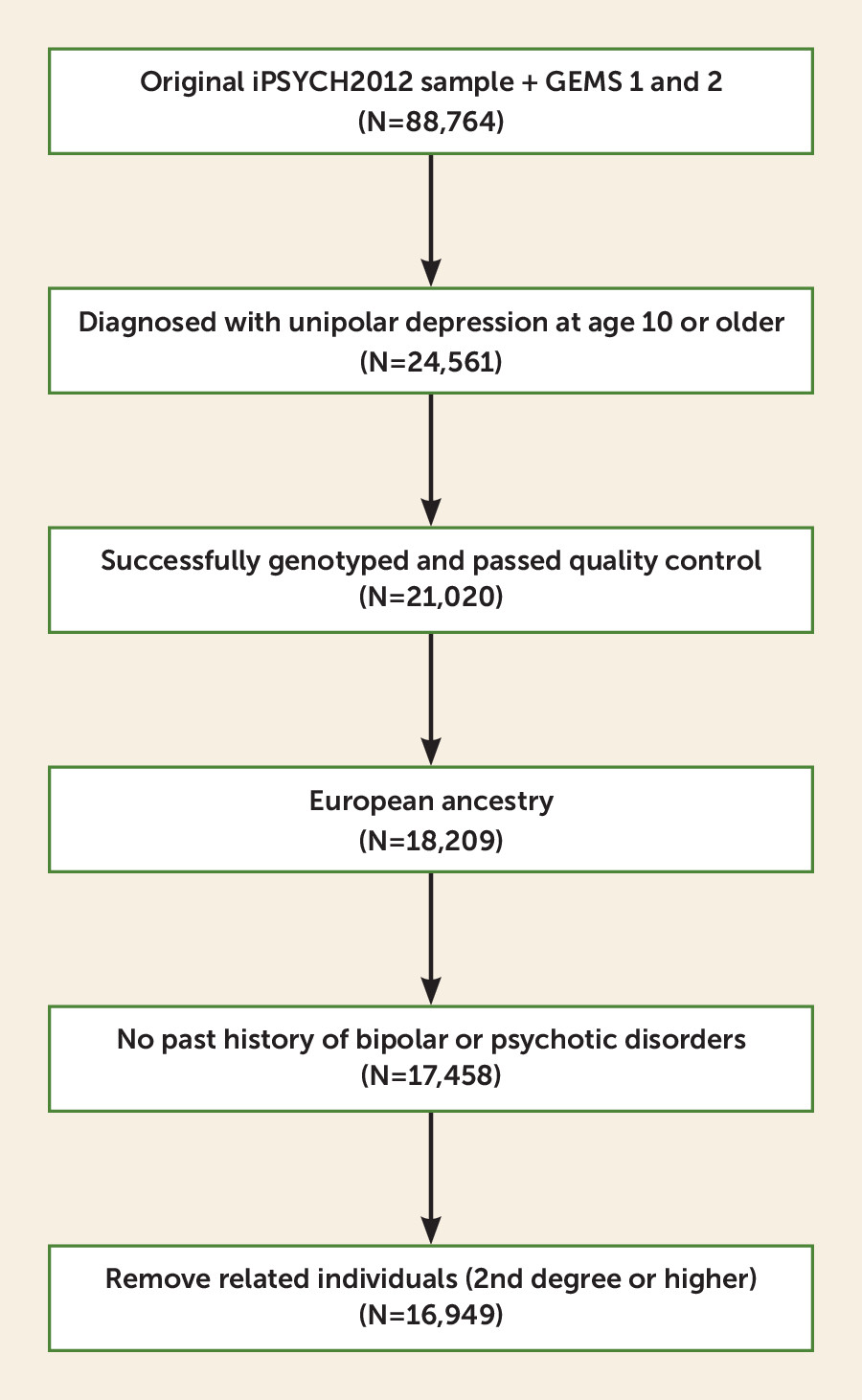
Measures
Analysis
Sensitivity Analysis
Results
Sample Characteristics
| Characteristic | N | % |
|---|---|---|
| Sex | ||
| Female | 11,675 | 68.9 |
| Male | 5,274 | 31.1 |
| Treatment setting | ||
| Outpatient | 10,390 | 61.3 |
| Inpatient | 2,495 | 14.7 |
| Emergency department | 4,064 | 24.0 |
| ICD-10 diagnostic code | ||
| F32 | 13,655 | 80.6 |
| F33 | 3,294 | 19.4 |
| Severity | ||
| Mild | 2,969 | 17.5 |
| Moderate | 7,484 | 44.2 |
| Severe | 1,584 | 9.3 |
| Psychotic | 441 | 2.6 |
| Unspecified | 4,471 | 26.4 |
| Diagnosis type | ||
| Main | 14,167 | 83.6 |
| Secondary | 2,773 | 16.4 |
| Underlying cause | 9 | 0.1 |
| Age at diagnosis (years) | ||
| 10–18 | 7,041 | 41.5 |
| 19–24 | 6,562 | 38.7 |
| 25–29 | 3,241 | 19.1 |
| 30–35 | 105 | 0.6 |
| Parental history of mental disorders | ||
| Unipolar depression | 1,468 | 8.7 |
| Bipolar disorder | 191 | 1.1 |
| Psychotic disorder | 498 | 2.9 |
Main Outcomes
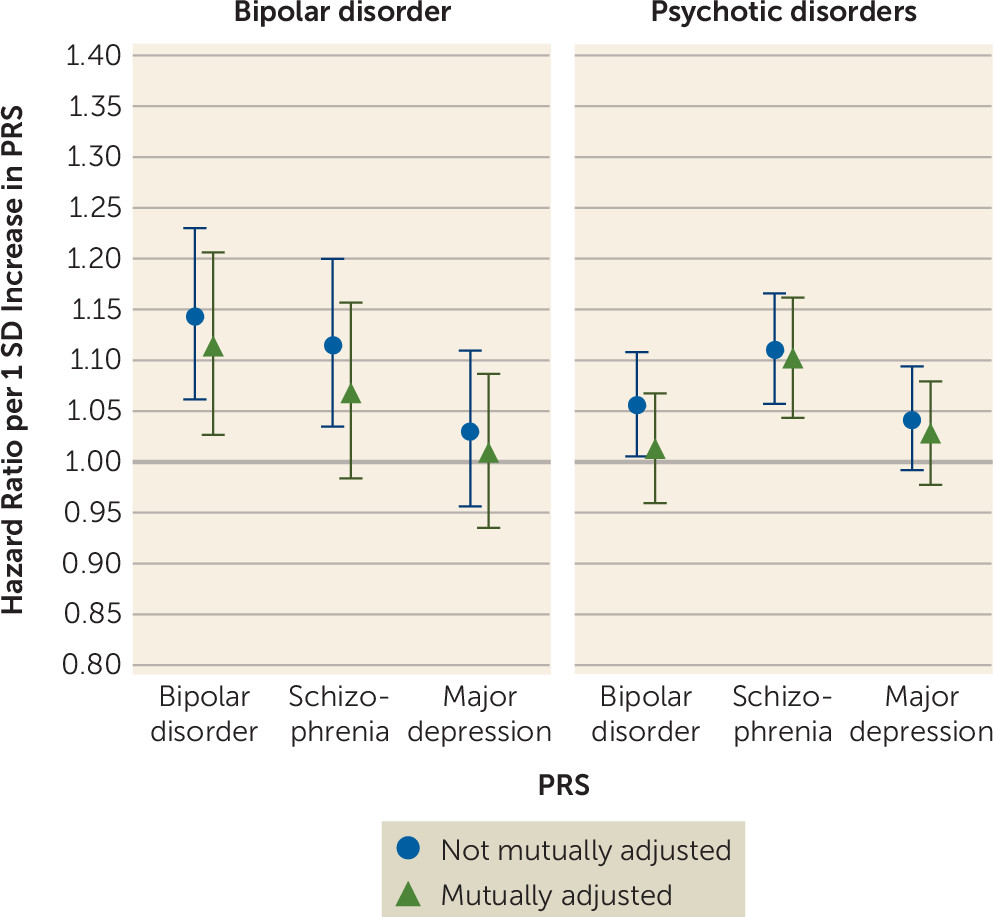
Secondary Outcomes
PRS and Parental History

Absolute Risk of Progression by Parental History and Polygenic Liability
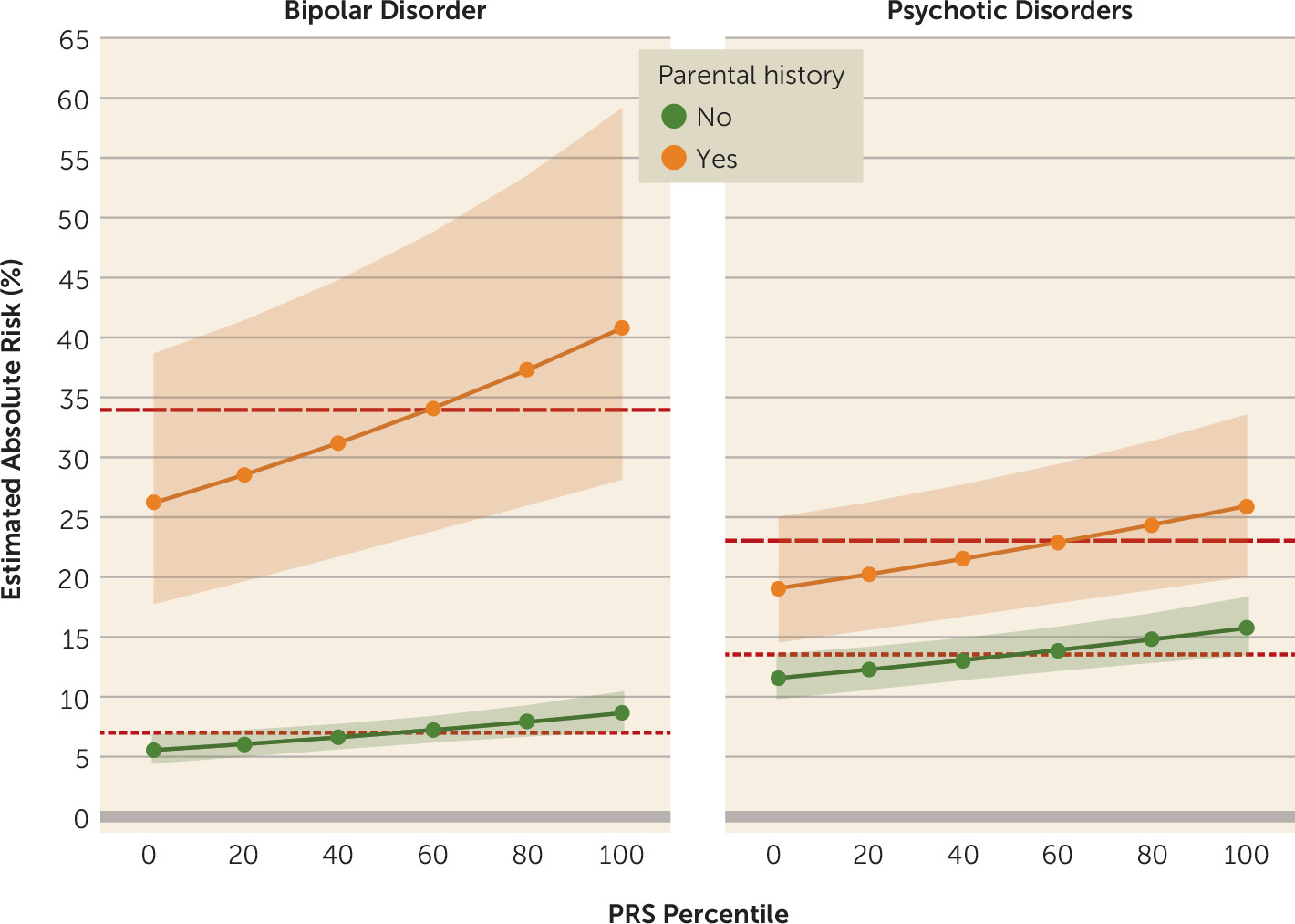
Sensitivity Analysis
Discussion
Limitations
Footnote
Supplementary Material
- View/Download
- 693.17 KB
- View/Download
- 693.17 KB
References
Information & Authors
Information
Published In
History
Keywords
Authors
Competing Interests
Funding Information
Metrics & Citations
Metrics
Citations
Export Citations
If you have the appropriate software installed, you can download article citation data to the citation manager of your choice. Simply select your manager software from the list below and click Download.
For more information or tips please see 'Downloading to a citation manager' in the Help menu.
View Options
View options
PDF/EPUB
View PDF/EPUBLogin options
Already a subscriber? Access your subscription through your login credentials or your institution for full access to this article.
Personal login Institutional Login Open Athens loginNot a subscriber?
PsychiatryOnline subscription options offer access to the DSM-5-TR® library, books, journals, CME, and patient resources. This all-in-one virtual library provides psychiatrists and mental health professionals with key resources for diagnosis, treatment, research, and professional development.
Need more help? PsychiatryOnline Customer Service may be reached by emailing [email protected] or by calling 800-368-5777 (in the U.S.) or 703-907-7322 (outside the U.S.).
